Why is community management important?
Written by Claire Scaramanga
With over 3.6 billion people across the world now using social media platforms, the demand for brands to manage their community increases daily.
This article has been assigned the following categories: Social media,
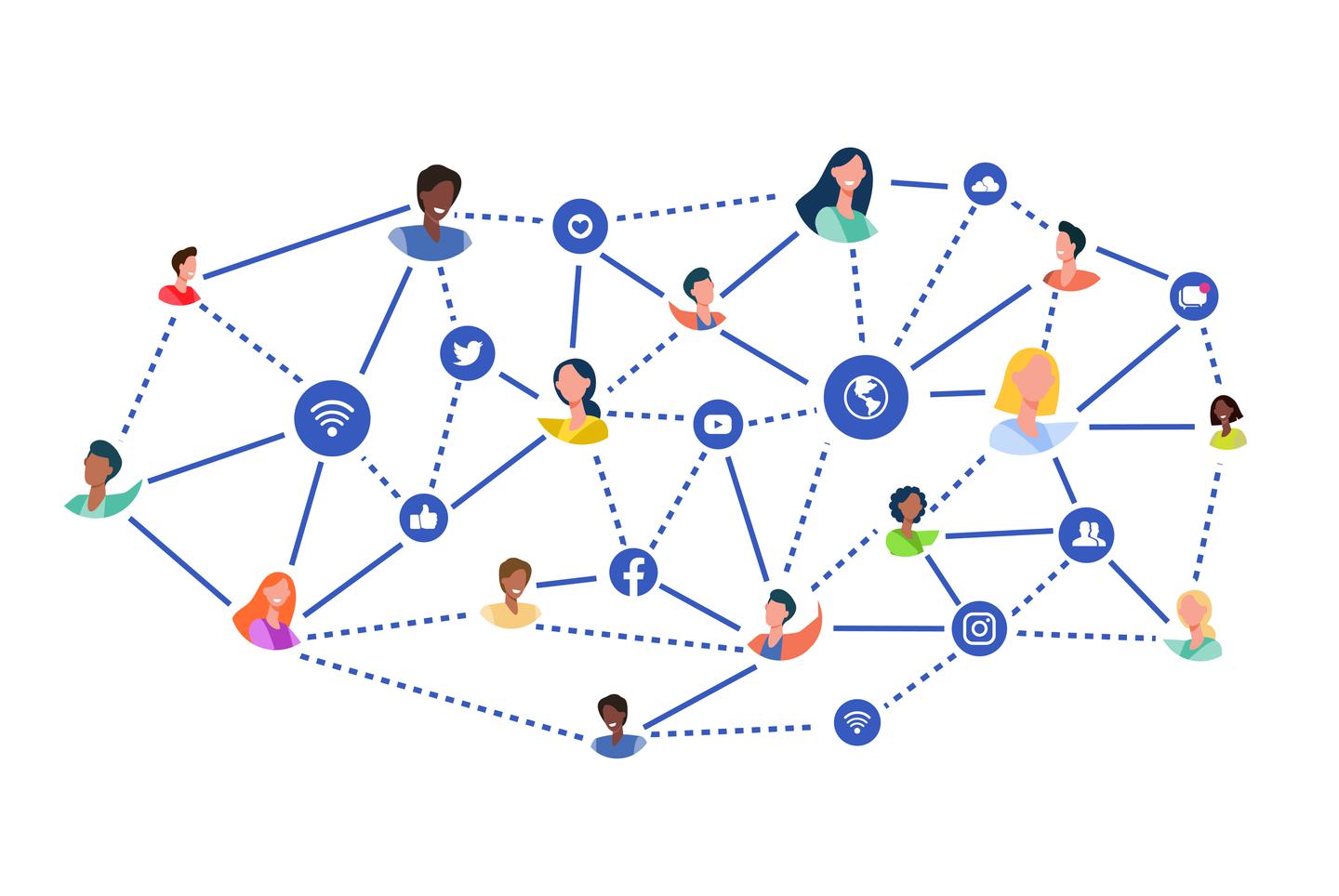
Whether you use YouTube, Facebook, Reddit, Instagram etc, the moment you press like, subscribe or follow on these platforms, you’re now involved in a specific community.
Being involved in a community can be as simple as following the company page for Apple on Facebook which would then mean you’re engaging with the Facebook community for Apple.
What is community management?
Community management is monitoring the various online communities while identifying and acting on engagement opportunities in a timely manner while increasing the connection between the brand and its audience.
This doesn’t just involve pushing multiple posts a day on your brand’s social profile. Instead of posting three times a day, why not reduce that to one or two and use the time you would have spent on the third post.
Your “community” is your target audience, users who engage with your brand online or even current consumers who use your business. Because of this, focusing on community management is a must if you want to have any long lasting presence and is an element of importance that increases the more your brand grows.
The benefits of community management
There’s a variety of different benefits that end up coming from employing community management in your social strategy. The four key elements are
- Relevancy
- Reputation
- Humanisation
- Monitoring
Relevancy
As mentioned before, the demand for brands to manage their community increases daily. Community management allows brands to have this social presence that can transform regular consumers into loyal fans of the brand, have a unique voice that stands out from the rest and have that relevancy edge over brands who don’t have a community management plan.
The Twitter account for The Museum of English Rural Life experienced a huge boost in relevancy after posting one particular tweet and capitalising on the engagement to follow. An archived photo of a large sheep along with the text “look at this absolute unit” was all it took. (An "absolute unit is a person/animal of exceptional body mass and/or size)
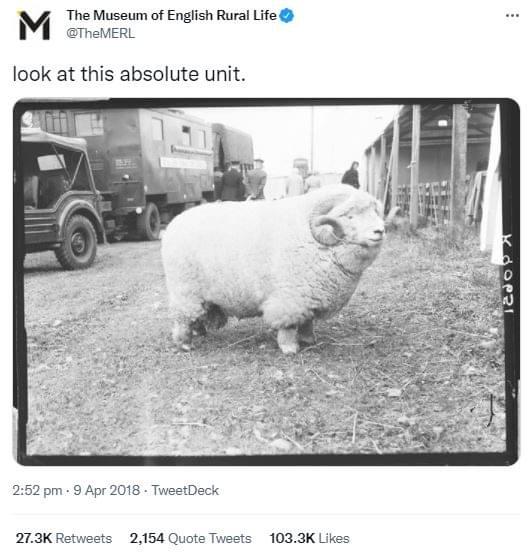
The tweet itself which as of today, has been retweeted over 25,000 times, liked over 100,000 times and over 30,000 comments went viral almost instantly and increased the Museum’s Twitter follower count from 10,000 to more than 30,000 over a short time period.
The tweet even caught the attention of Tesla Motors CEO, Elon Musk, who changed his profile picture to the livestock sheep which opened an opportunity for the Museum to engage with the entrepreneur and his millions of followers.
After the stats proved that there was a demand for this type of content due to the abnormality of the livestock shown, an entire social campaign went live which focused on informing and sharing black and white photos of livestock, vintage drawings of monumental pigs and content featuring recently captured farm animals while engaging and educating their newfound community.
The campaign saw the Museum increase its Twitter following to 100,000 followers just under a year after the absolute unit was tweeted and the campaign helped the “museum vastly increase its social media following and welcome more visitors through its doors.”
Using a combination of meme culture and farmyard animals they were able to achieve multiple viral tweets and increase their social awareness and community to that of the levels of the larger museums (Leeds Museums, London Transport Museum and Bristol Museum).
Reputation
Engaging with users online, if a user has taken the time to engage or post asking a question about your brand and essentially contributing to your social presence, it’s important you answer back or at least engage with it. By engaging with the user’s post, it helps strengthen that specific relationship with the user. This is important because it’s a public answer, everyone on that platform can see how you interact with users and how you handle any queries and form an opinion about your brand based on this.
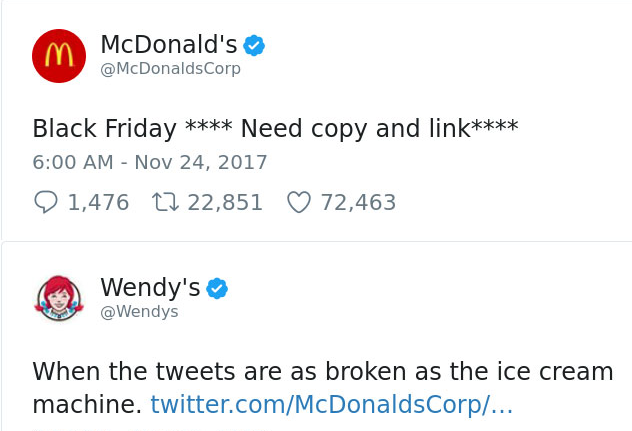
Now, not every B2C or B2B brand should copy this approach for obvious reasons and while it can be seen as an unorthodox social approach, it’s still an approach that gets users interested and wanting to get involved more with this rogue brand.
Wendy’s has recently gone a step further and taken their brand reputation and created an entire social media community event called National Roast Day, an entire day where brands can essentially beg Wendy’s to roast them, it may seem strange but any brand that gets a roast from Wendy’s can expect large numbers of engagement and views on that day.
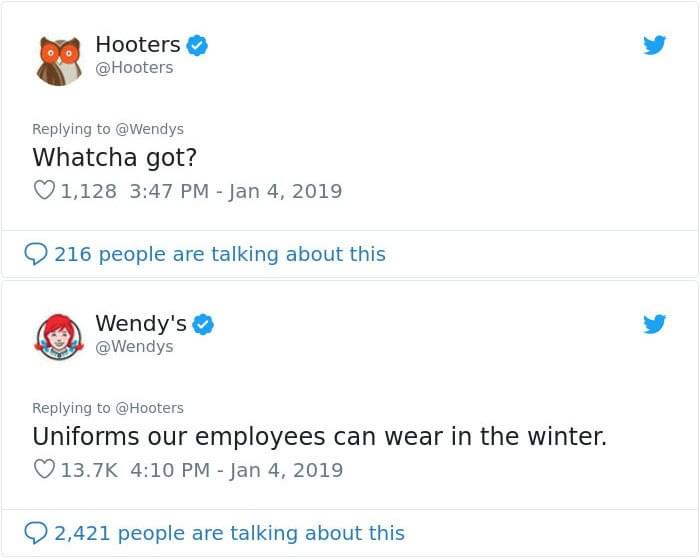
Humanisation
In this online space, it is important to keep in mind that while engaging with other users, there are actual humans on the other side of the screen, community management helps with this by allowing your brand to feel and become more human.
Humanising a brand allows your brand to come across as relatable among users and any social media posts, forum posts, online advertising or campaigns should be curated in a way that makes a connection with the users. Ignoring this will mean your brand appears distant and cold and in return, your room for growth will be diminished as well.
I manage a few community fan pages/groups on social media and it’s always important that we give any user that engages with us an immersive experience. One of the communities I own is Animal Crossing: Pocket Camp, a community based around the free-to-play social simulation mobile game with the same name.
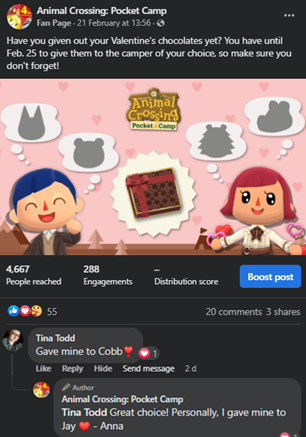
In this recent post, the game made an announcement regarding its recent Valentine’s Day event, so, we reminded players that their in-game item was expiring, and some users decided to even share with us who they used the item on.
This creates the perfect opportunity for the page to engage with the comments and even offer insight into how the moderators of the page who play the game also did with theirs.
Small details such as the sign off with the moderator’s name after the comment is a vital part of humanisation in this specific industry as users do forget that there is another human writing out the messages and comments behind the screen.
Monitoring
Monitoring is the best way to get the most accurate online conversations that are related to your brand and the community surrounding it. This includes monitoring an opportunity and approaching it, use a specific social platform’s search functions to see if any online conversations is going on about your brand or a conversation that your brand could jump into and help with. Monitoring helps you to create an optimal strategy so that you can follow the points above in more detail.
As a brand owner, you’ll more than likely be looking to grow and reach new users who may become consumers.
However, it’s important to focus on existing consumers and followers you may have online. That’s exactly where community management can help your brand.
To conclude, community management isn’t some fancy new thing, it’s a concept which has been around for ages and as each week goes by, becomes more and more important. Social strategies are adjusting with this as well with community management playing a predominant part of the future for growth and brand presence. There’s no good reason you shouldn’t be looking to be more active with your community, start engaging!


